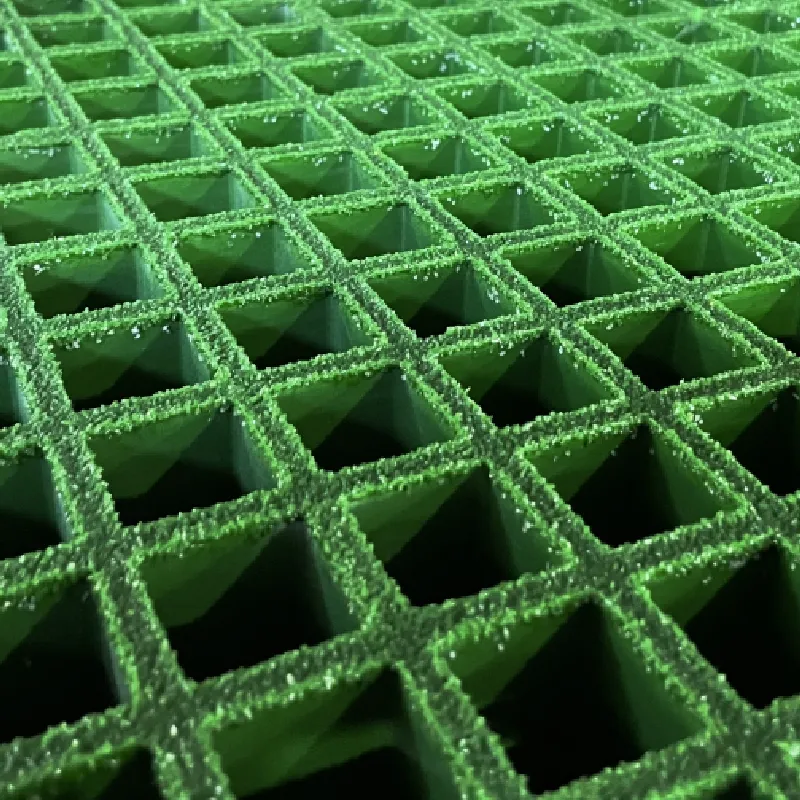loading...
- No. 9, Xingyuan South Street, Dongwaihuan Road, Zaoqiang County, Hengshui, Hebei, China
- admin@zjcomposites.com
- +86 15097380338
- Welcome to visit our website!
Innovative Materials for Enhanced Durability in FRP Bridge Deck Construction
FRP Bridge Deck A Modern Solution for Infrastructure
In recent years, the rapid advancements in technology have led to innovative construction materials becoming increasingly popular in civil engineering. One such material making waves in the infrastructure sector is Fiber Reinforced Polymer (FRP) composites, particularly in the form of bridge decks. With the growing need for durable, lightweight, and corrosion-resistant structures, FRP bridge decks are emerging as a modern solution for both new constructions and rehabilitating existing bridges.
FRP composites are made from polymer resins reinforced with fibrous materials, such as glass, carbon, or aramid fibers. This combination results in a lightweight yet incredibly strong material with exceptional resistance to environmental factors, making it an excellent choice for bridge decking. One of the most significant advantages of FRP bridge decks is their reduced weight compared to traditional concrete or steel decks. This lightweight nature not only eases transportation and installation but also minimizes the load on substructures, potentially reducing the need for extensive foundational work.
FRP Bridge Deck A Modern Solution for Infrastructure
The design flexibility offered by FRP composites is another reason for their growing popularity in bridge construction. Engineers can shape and mold FRP materials to meet specific design requirements, allowing for creative and efficient structural solutions. This adaptability not only ensures that the aesthetics of the bridge align with local environments and communities but also enhances the bridge's performance characteristics.
frp bridge deck

Furthermore, FRP bridge decks offer increased safety due to their non-slip surface, which is crucial in maintaining traction for both vehicular and pedestrian traffic. Additionally, the material's high visibility can improve nighttime driving conditions and enhance overall road safety. As global populations continue to rise, and urbanization accelerates, the need for innovative safety measures in infrastructure has never been more paramount.
Cost-effectiveness is another factor that contributes to the attractiveness of FRP bridge decks. Initial investments in constructing with FRP materials may be higher than traditional materials; however, the long-term savings associated with reduced maintenance and repair costs, along with longer service life, present a compelling argument for their adoption. The reduced weight of the FRP decks also leads to lower transportation and installation costs, further enhancing their economic viability.
Despite the numerous benefits, the adoption of FRP bridge decks faces some challenges. For instance, the material's susceptibility to UV radiation can affect its longevity if not properly treated or coated. Additionally, while the technology is gaining traction in many regions, some engineers and construction professionals may still be apprehensive about unfamiliar materials and the learning curve associated with their application.
In conclusion, FRP bridge decks represent a forward-thinking approach to modern infrastructure development. Their lightweight, corrosion-resistant properties, combined with design flexibility, enhanced safety features, and cost-effectiveness, make them an attractive option for engineers and city planners alike. As the infrastructure demands grow and the quest for sustainability intensifies, the continued research and refinement of FRP technology will likely play a pivotal role in shaping the bridges of the future. Ultimately, adopting FRP materials in bridge construction could not only enhance the durability and reliability of our transportation networks but also pave the way for innovative infrastructural solutions in the coming decades.
-
Why Choose a Galvanized Water Tank for Your Storage NeedsNewsMay.21,2025
-
The Strength and Durability of FRP GratingNewsMay.21,2025
-
The Importance of Water Treatment Systems for Clean and Safe WaterNewsMay.21,2025
-
The Advantages of FRP Rebar for Construction ProjectsNewsMay.21,2025
-
Say Goodbye to Hard Water with a Reliable Water SoftenerNewsMay.21,2025
-
Maximize Your Water Storage with a Sectional Water TankNewsMay.21,2025
-
The Power of Filter VesselsNewsMay.19,2025
